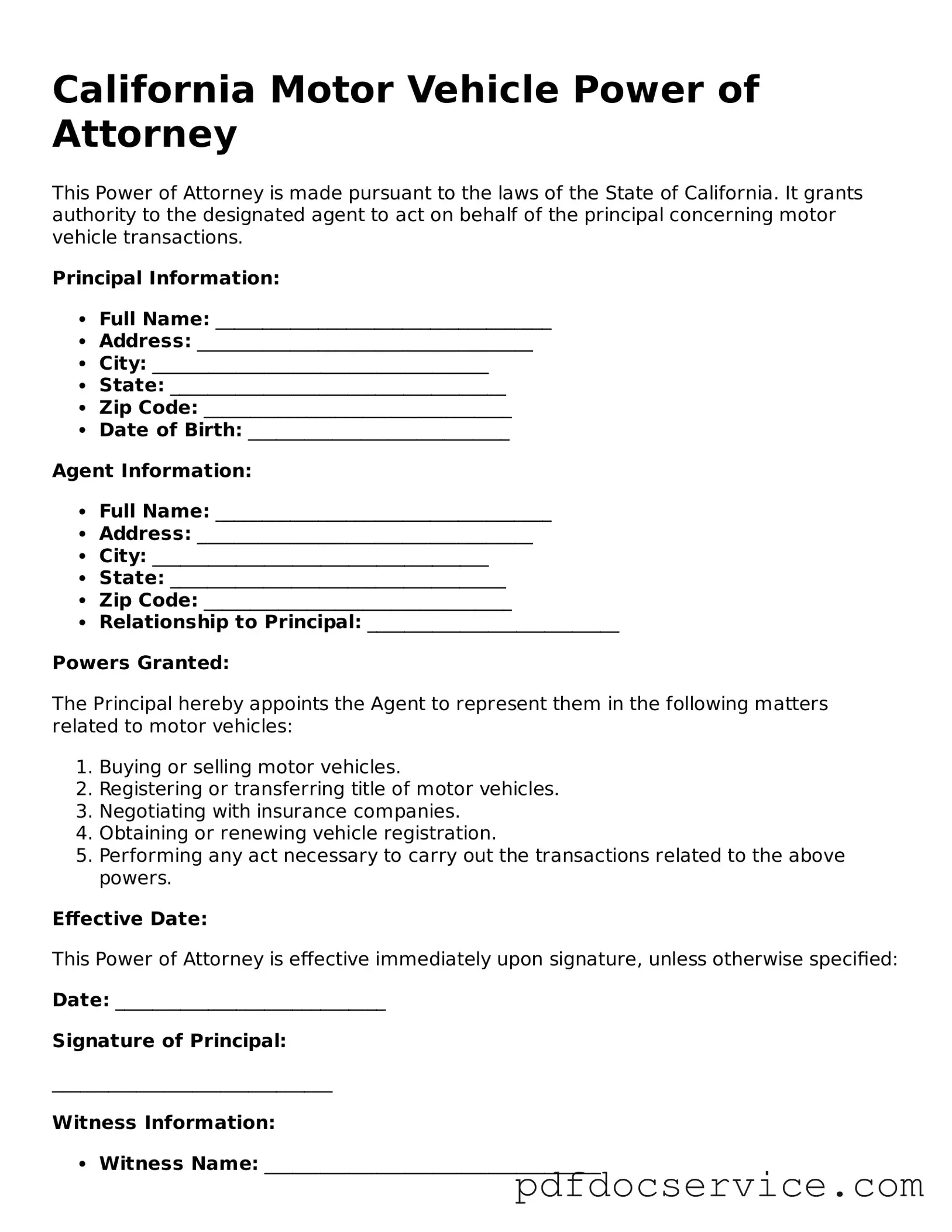The California Motor Vehicle Power of Attorney form allows an individual (the principal) to authorize another person (the agent) to act on their behalf in matters related to their motor vehicle. This can include tasks like signing documents for vehicle registration, transferring ownership, or handling other vehicle-related transactions.
Any competent adult can serve as an agent. This includes family members, friends, or even professionals such as attorneys or car dealerships. It is important to choose someone you trust, as they will have the authority to make decisions regarding your vehicle.
To complete the form, follow these steps:
-
Download the California Motor Vehicle Power of Attorney form from the DMV website or obtain a physical copy.
-
Fill in your name and contact information as the principal.
-
Provide the agent's name and contact information.
-
Specify the powers you are granting to the agent, such as signing documents or transferring title.
-
Sign and date the form in the designated area.
No, the California Motor Vehicle Power of Attorney form does not require notarization. However, it is advisable to have it signed in front of a witness to avoid any disputes later on.
How long is the Power of Attorney valid?
The Power of Attorney remains valid until you revoke it, the agent can no longer serve, or the specific task is completed. If you want to revoke the power, you must notify the agent and, if necessary, submit a revocation form to the DMV.
Yes, you can use the California Motor Vehicle Power of Attorney form for multiple vehicles. Just list each vehicle's details on the form, ensuring that the agent has the authority to act on your behalf for each one.
What if I want to revoke the Power of Attorney?
To revoke the Power of Attorney, you should notify your agent in writing. It is also a good idea to inform the DMV, especially if the agent has already acted on your behalf. This helps prevent any potential misunderstandings.
There is no fee for completing the California Motor Vehicle Power of Attorney form itself. However, if the agent uses this authority to complete transactions at the DMV, standard fees for those transactions may apply.
You do not need to submit the completed Power of Attorney form to the DMV unless it is part of a specific transaction, like transferring ownership. Keep the form for your records and provide it to your agent when needed.
